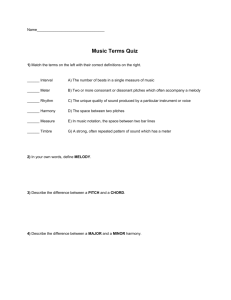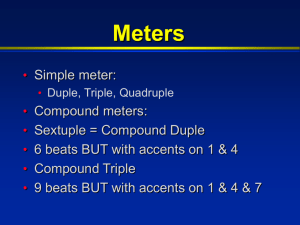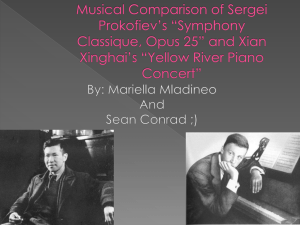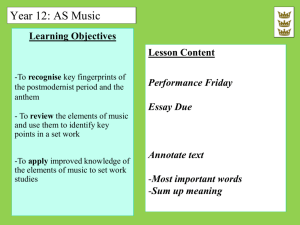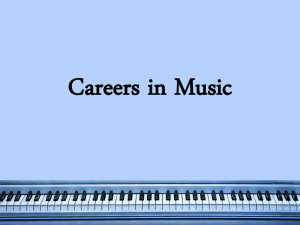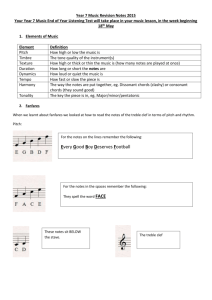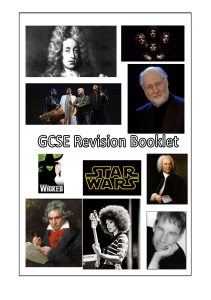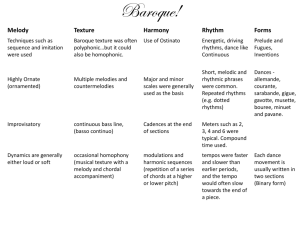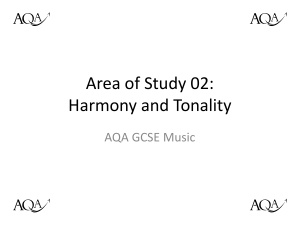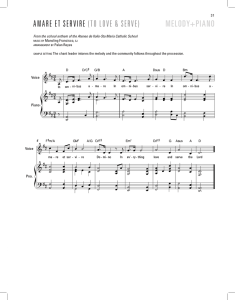Elements of Music POWERPOINT
advertisement
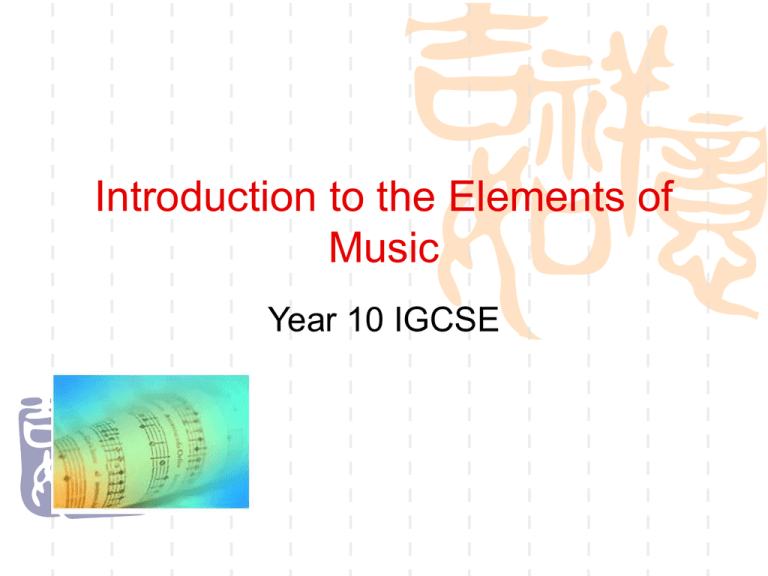
Introduction to the Elements of Music Year 10 IGCSE What are they? All music can be described in relation to the elements of music, which are different _______________ of music. These include: Dynamics Rhythm/Metre Pitch/Melody/Harmony Instrumentation/Timbre Texture Tempo Structure/Form Context Easy Way to Remember These D R. P I T T S C Dynamics Change in volume, musical expression, determining partly the mood of the piece. This indicates the loudness/softness of a piece of music, and the way to attack certain notes (ie. Accents) These are notated using abbreviations or symbols. Some Common Dynamic Markings ppp - pianissinissimo pp – pianissimo (softer than piano) p – piano (soft) mp – mezzo piano (stronger than piano, but still soft) mf – mezzo forte (medium strong) f – forte (strong/loud) ff – fortissimo (stronger than forte) ARTICULATIONS < - accent - - sustain (sustenuto) . = staccato (short note) Some Common Dynamic Markings < = Crescendo (cresc.) – getting louder >= decresceno (decresc.) – getting softer Sfz = surprise! – suddenly loud Rhythm/Metre Your definition: The arrangement of musical time. Music is arranged in beats grouped into measures. Meter is the grouping of strong and weak beats. Rhythm is the arrangement of note lengths in a piece of music. “Rhythm is shaped by metre” Pitch/Melody/Harmony/Tonality PITCH Music is produced through VIBRATIONS. The frequency of these vibrations produce sounds of varying lowness or highness. Slowly vibrations/bigger objects: Faster vibrations/smaller objects: Pitch/Melody/Harmony/Tonality MELODY This is the arrangement of series pitches in musical time. This can be considered the recognizable ‘tune’ of the piece. This is the HORIZONTAL aspect of music Pitch/Melody/Harmony/Tonality HARMONY This is a group of notes (chords) played together and the relationship between a series of chords. This usually supports the melody, played simultaneously or as broken chords, giving music it’s TEXTURE. This is the vertical aspect of music. Pitch/Melody/Harmony/Tonality TONALITY Also known as the key. A piece can be centered around a certain set of pitches (major and minor scales), where there is a sense of completion when the CHORDS return to the TONIC, from the DOMINANT (Key of C: returning from G to C) Instrumentation/Timbre What is producing the music. This describes what instruments [or voices] are heard. This will greatly affect the mood of the piece. Timbre is also known as TONE COLOR, which is the quality of sound that is used to distinguish between instruments Texture This describes the layers in music and how they relate to each other. This is also related to the VERTICAL aspect of music. THICK/THIN MONOPHONIC POLYPHONIC HOMOPHONIC Tempo How fast or slow music is played. This is usually marked using with symbols or italian terms Some Common Tempo Markings Largo Andante Allegro Allegretto Structure/Form This explains how music is organized into sections. The structure of the piece is an overall picture of how the piece progresses (in sections, using repetition, phrase structure etc). Some common musical forms: - Binary - Ternary - Rondo - Through-Composed - Strophic - Sonata Allegro - Theme and Variation Context This allows you to appreciate music for where it was originally created, and for the purpose it was created. This adds meaning to the music you hear, and will give explanations for why certain elements of music are used in distinct ways. Ie. How can you tell the difference between a piece by piano Bach and a piece by Chopin? Ie. How can you tell the difference between a piece from Korea and a piece from Spain?
